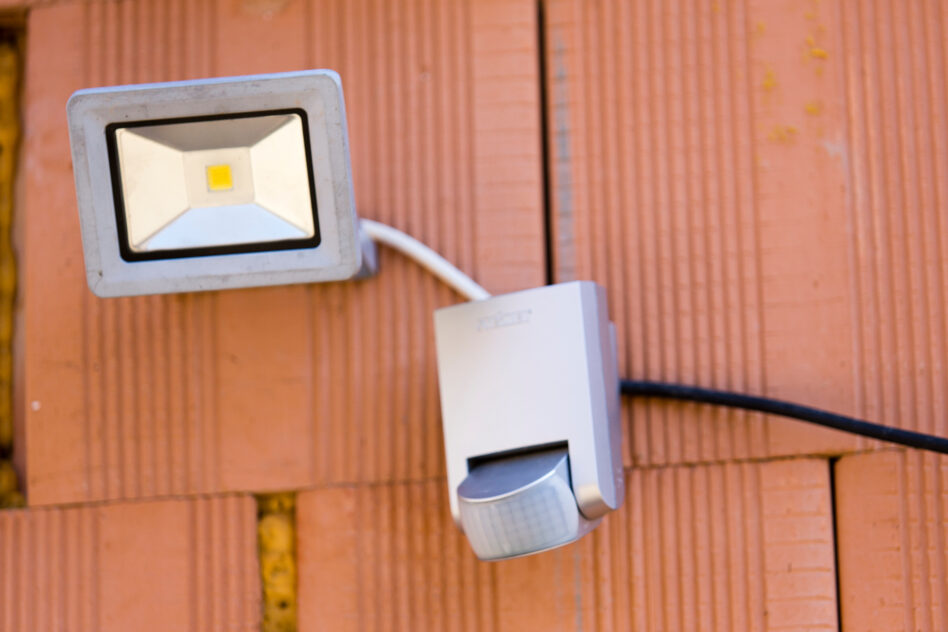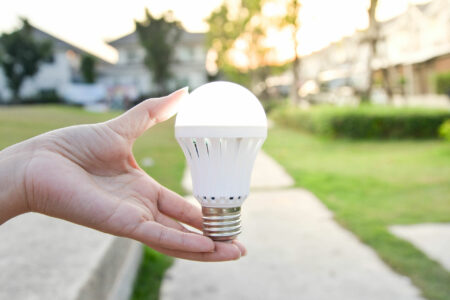Having a constantly flickering motion sensor can be quite annoying. It might also pose a safety hazard. In this article, we’ve listed all the reasons why your motion sensor turns on and off, and how to fix it. Let’s dive in!
Reasons Why Your Motion Sensor Turns On and Off
Motion sensors turning on and off is a more common problem than you might think. There are many reasons behind this, including the following:
Faulty Sensor
The first culprit behind the motion sensor turning on and off might be the device itself! Sadly, motion detectors have a lifespan, and after a while, the mechanism will start to fail, especially if you don’t regularly maintain them.
Yet, if your sensor is still new, the problem might be with its position, settings, or even the sensor.
The surest way to check if the problem is with the motion detector is to try the test mode. This mode allows you to inspect your device’s sensitivity and range of detection.
Unsuitable Sensor Settings
The problem might not be with the sensor, but with its settings.
For example, too high sensitivity will cause the sensor to capture motion out of range, causing it to constantly turn on and off.
On the other hand, too low sensitivity may cause the motion sensor to turn off when there’s someone in the vicinity.
You can also use the test mode to make certain of the cause. Another simple method is to walk in front of the motion detector. If the light turns off immediately after, this might mean you need to adjust the settings of your sensor.
Incompatible Light
The reason your motion sensor turns on and off might not have anything to do with the sensor itself. Instead, your motion sensor’s light might be the problem.
To explain, some LED bulbs aren’t compatible with motion sensors, causing them to blink. That’s because the power output from the motion sensor and the input to the lightbulb aren’t the same.
This might also happen if you have different light bulbs connected to the same sensor or if the lightbulb needs replacing.
Environment and Weather
If you live in a windy or rainy area, the rain or snow might trigger your motion sensor.
Also, dust and moisture might seep into the motion sensor, causing it to malfunction.
Moreover, your motion sensor could be detecting the buzzing of flying insects.
How to Fix Your Motion Sensor
Now that you know all the possible reasons why your motion sensor is malfunctioning, fixing the issue is quite straightforward. Here are some quick solutions you can try:
Restart the Motion Sensor
Though this might seem like a straightforward solution, a lot of people forget about it, further complicating the issue.
If your motion sensor is malfunctioning, simply turning it off and then on again might be enough to get it back to normal.
Properly Install the Motion Sensor
To ensure that your motion detector is operating smoothly, you’ll have to remove the cover of the device. As daunting as this might sound, it’s actually quite easy once you refer to the user manual.
Make sure the sensor is facing in the right direction and that it’s perfectly level.
If the angle of the sensor isn’t the problem, you might need to check the placement of the sensor. To correctly install the device, ensure you do everything on this checklist:
- Place the motion sensor 10 to 15 feet away from any heat source so that the change in temperature doesn’t trigger it.
- Mount the motion detector in the corner or high on a wall and opposite an entrance with nothing blocking the view.
- The detecting range of the motion sensor should be 15 to 75 feet.
Adjust the Device’s Settings
The number of settings on the motion detector device can be confusing. Generally, though, you can fix the problem by adjusting one of the following:
Sensitivity
Depending on your motion sensor, some devices allow you to adjust the sensitivity to different levels, while others only have two settings; high and low.
Usually, if the device is turning on and off too frequently, you’ll need to switch to low sensitivity. If your motion detector has multiple options, choose a lower sensitivity and check if the problem persists.
On Duration
The on-duration of the motion sensor determines how long the light stays on once the device captures motion. If it’s set too short, this might cause constant flickering of the light.
You can adjust this setting so the light stays on for as long as you want. Ideally, setting the time for 25 to 35 seconds will solve the problem.
Make Sure the Motion Sensor and Lights Are Compatible
There are multiple ways to fix the compatibility issue, including:
- Ensuring all the lightbulbs connected to the sensor are the same type
- Replacing the LED light bulb with a compact fluorescent light
- Swapping the motion sensor for an LED-compatible one
Get an Outdoor Motion Sensor
The first thing you should do to ensure the weather doesn’t mess with your motion sensor is to get an outdoor motion sensor!
You might be thinking that you’re saving a few bucks by getting a simple indoor motion sensor. However, outdoor detectors are bulkier, sturdier, and less likely to malfunction due to weather. So, they can save you some money in the long run.
For extra protection, make sure to tightly seal any gaps in the motion detector’s body. This way, no bugs, dust, or moisture can damage it.
You can even take it one step further and install a weatherproof box to keep your motion sensor in it. This can surely prolong the lifespan of the detector while keeping it out of the reach of unwanted intruders.
Clean the Sensor
Motion sensors—outdoor ones in particular—are in constant contact with dust and debris. Naturally, you’ll need to clean the sensor every once in a while so that it works perfectly.
Cleaning the sensor also gets rid of any insects that might have made a home out of your device. To clean the sensor, follow these steps:
- Turn off the motion sensor and refer to your device’s user manual to safely remove its cover.
- With a dry brush, brush away any dust on the device.
- Use a wet cloth to wipe away the excess dirt.
- Thoroughly dry the motion sensor and use a cotton swab to remove dirt stuck in any crevices.
- Lastly, screw the cover back on the motion sensor and turn it back on.






